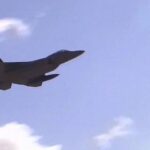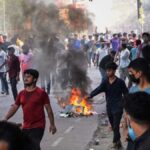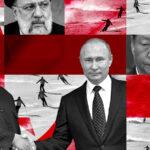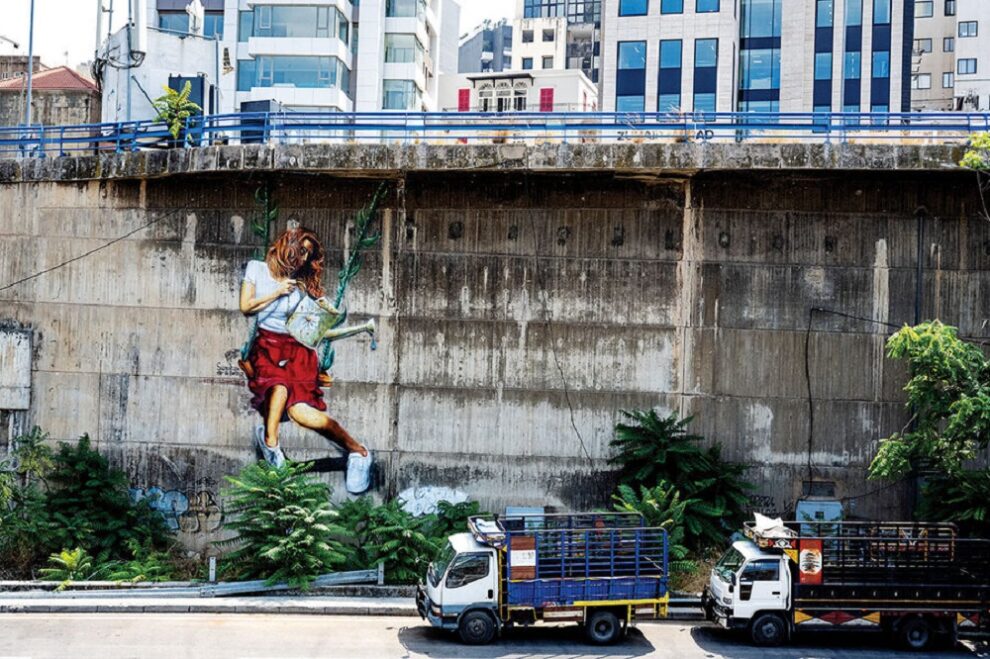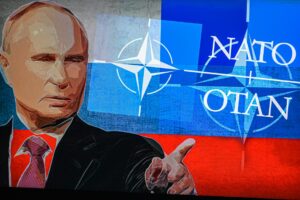Rarely have so many Lebanese turned out on the streets to demand wholesale political change as when they began their self-declared “October Revolution” of 2019. And rarely has there been so little positive result.
In recent years, Lebanon has been engulfed by a multitude of crises, starting with economic collapse in late 2019. The following year brought the COVID-19 pandemic. And in August 2020 came the second-largest nonnuclear explosion ever recorded, when illegally stored ammonium nitrate at the Port of Beirut exploded, taking more than 200 lives, forcing 300,000 from their homes, and leaving some $15 billion in damage.
Three-quarters of the population has since been pushed below the poverty line, and shortages, power cuts, and surging prices have become facts of life.
As protests and the hope for change have dissipated, and frustrated Lebanese citizens even held up banks to withdraw their own cash, one constant has been vibrant, anti-government graffiti: spray-painted howls of anger and protest.
Everywhere you look in the capital Beirut are reminders of people’s abiding distaste for their rulers, their banks, and a political elite that one analyst notes has chosen to “do nothing,” rather than “risk losing control over a system which has served them so well for so long.”
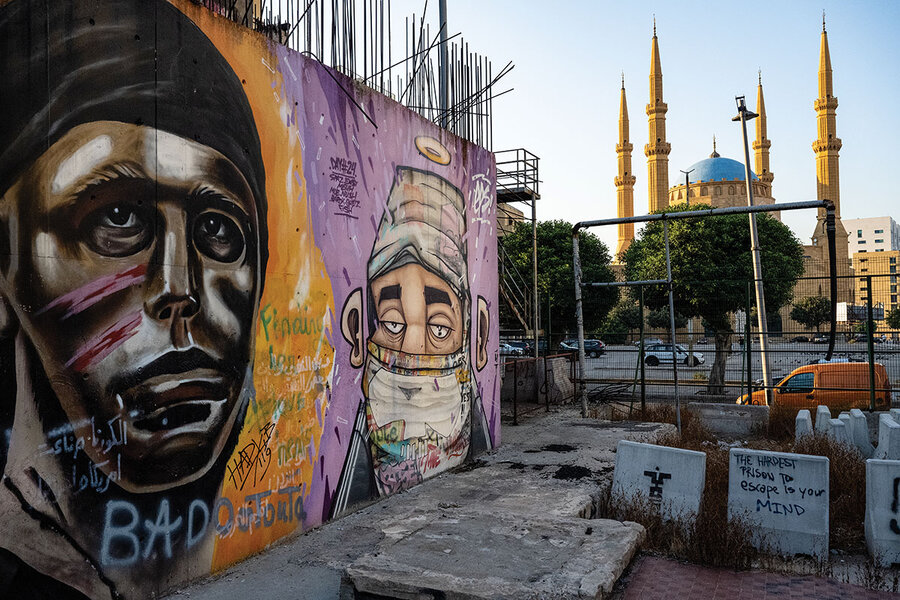
Scott Peterson/Getty Images/The Christian Science MonitorHide caption
Painted faces on the foundations of a theater wrecked during Lebanon’s 1975-1990 civil war overlook a blue-roofed mosque at Beirut’s central square, which was a focal point of the self-declared “October Revolution.”
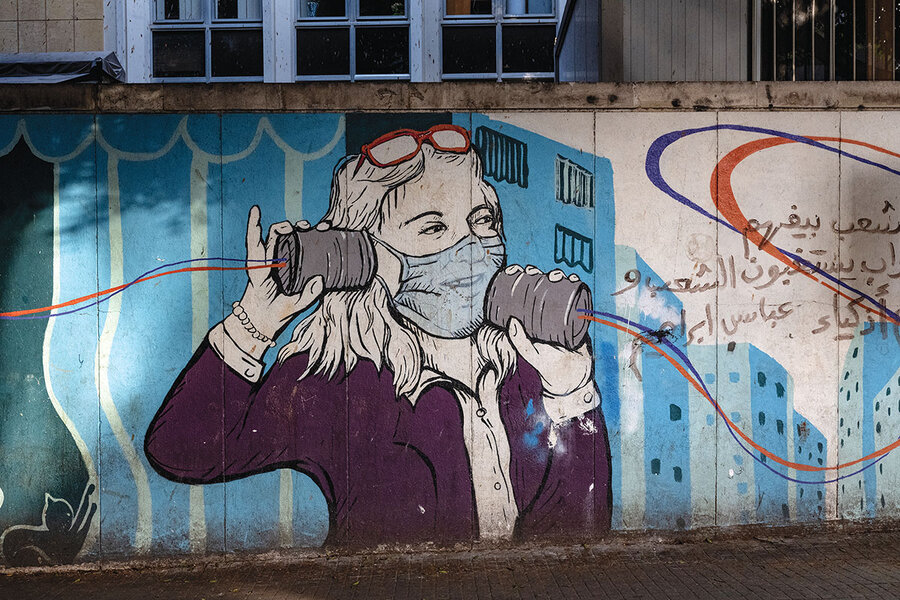
Scott Peterson/Getty Images/The Christian Science MonitorHide caption
Graffiti in the upmarket Hamra neighborhood depicts a woman communicating with children’s-style tin can and string, while wearing a face mask.
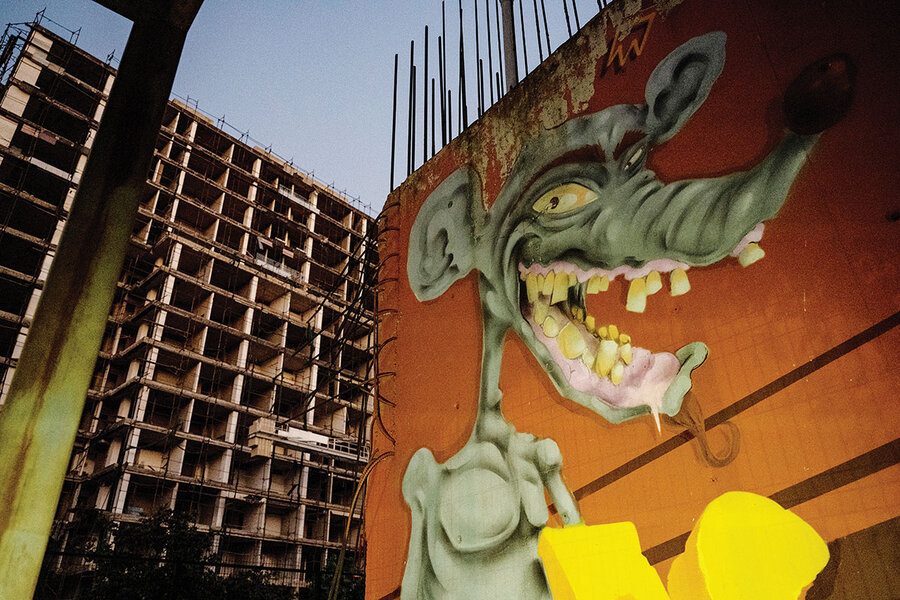
Scott Peterson/Getty Images/The Christian Science MonitorHide caption
Lebanon’s political elite is depicted as a voracious mouse eating a nation of cheese, on a wall adjacent to the central square where thousands of Lebanese protested in 2019 and 2020.
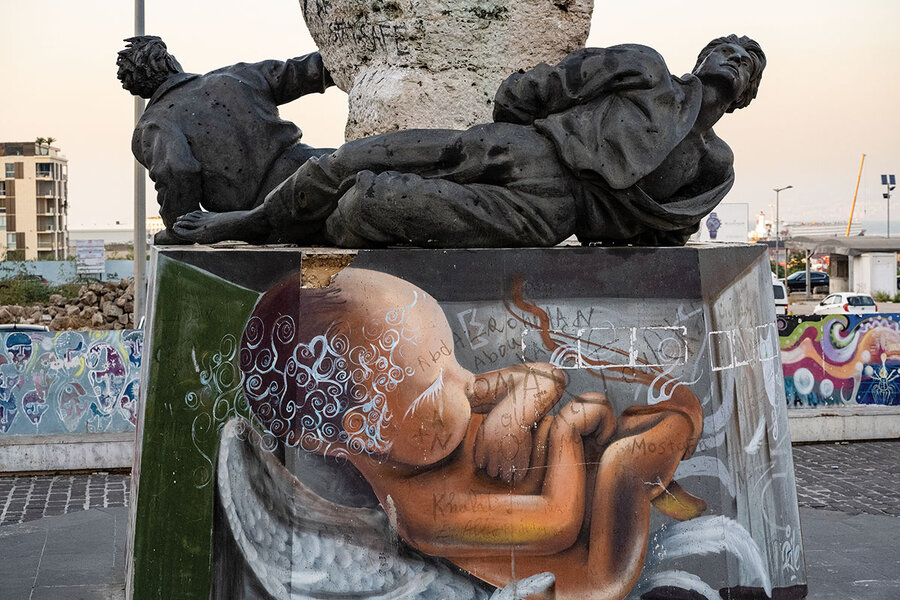
Scott Peterson/Getty Images/The Christian Science MonitorHide caption
An unborn baby with angel’s wings adorns the base of an iconic statue in Martyrs’ Square, which remains scarred with bullets and shrapnel from Lebanon’s civil war.
Source : csmonitor.com


